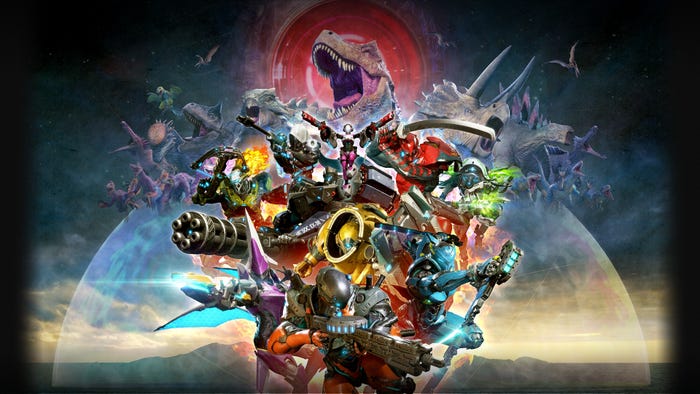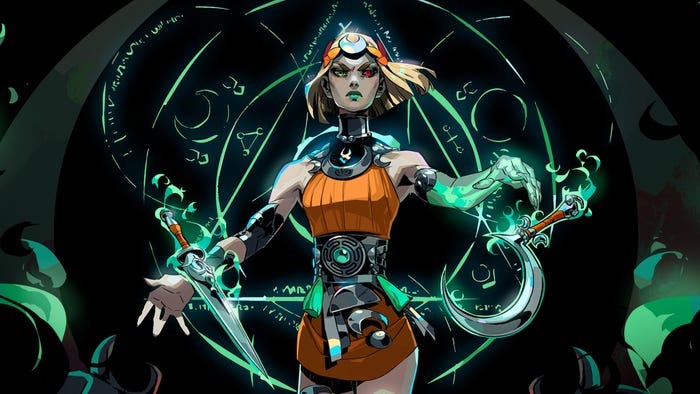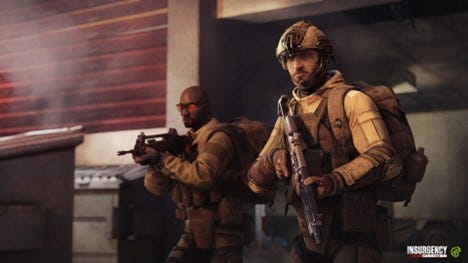
Featured Blog | This community-written post highlights the best of what the game industry has to offer. Read more like it on the Game Developer Blogs.
Trauma and Catharsis in Videogames — Part III of III: The Empathic Engine
The conclusion to my three part reflection on how violent game mechanics can not only enhance but become game narrative. This is where everything comes together in one last statement on the marriage of mechanics and narrative.

Trauma and Catharsis in Videogames
Part III of III
The Empathic Engine
How can a piece of art like The Last of Us which is so dependent on its extreme violence still support a meaningful and tender narrative? How is it that Bioshock Infinite’s story doesn’t collapse under the weight and primitivity of its shooter mechanics? Can game mechanics which replicate brutality and simulate trauma truly enhance a videogame’s narrative? These are questions that have been haunting this essay from its first page, and the gaming industry for three decades. They prove even more pertinent given the skyrocketing popularity of violent games.
Roger Ebert once famously remarked that he considered movies to be “the most powerful empathy machine in all the arts”. However, I do believe that especially in the last decade videogames have evolved and matured, and become that machine themselves. For what else is the digital stage I so laboriously described earlier than an empathic engine? Much more so than movies, due to the natural constraints of their medium, could be. The player is not just an audience, he’s also an actor and consequently both emotionally and, yes, physically involved in the game. The primal stress of hiding behind a bed from the infected lunatic prowling the halls of an abandoned house in The Last of Us is not an illusion. And it’s that immediacy which makes games so powerful. You never forget that the screen is a wall, a separation between you and the violence. A videogame is always self-referential. It will constantly call attention to itself, through menus, stats, on-screen button prompts, the player’s HUD, and much more. Nevertheless, it also integrates the player deeply into its machinations: In that sense, his quarantine behind the screen only softens the blow. Instead of being bludgeoned into trauma, you can actually think on what you have done. It’s the best of both worlds. Whilst complicit in the actions on screen, the natural distance of the artistic medium saves you from the trauma that real violence would inflict on you. Thus, it allows for the cathartic moment, developed from the exercise of violence.
At the outset, I mentioned how both The Last of Us as well as Bioshock Infinite express themselves in violent terms whilst still managing to be meaningful experiences. So, it seems only right that it would not be twists of logic or linguistic sleights of hand which tie up their stories at the end — but acts of killing.
Bioshock Infinite’s writer Ken Levine tried his best to infuse his shooter with more than violence. Set in an alternative 1912, on a magnificent floating city built for faith and fatherland called Columbia, the game explores racism and religion. It integrates scientific concepts like quantum mechanics and Everett’s many-worlds theory into its narrative just as comfortably as a meditation on autonomy and identity. Yet, like the game’s antagonist Zachary Comstock prophesies to the playable character Booker DeWitt early on: “This will end in blood, DeWitt. But then again … It always does with you, doesn’t it? It always ends in blood.” Bioshock Infinite ultimately allows itself to succumb to its mechanical bloodlust. Late in the game, it’s revealed that DeWitt, the man you have been controlling, in some regards, has been the true antagonist. An epiphanic moment similar to Anwar’s, in which DeWitt is confronted with the truth of his past. The man historicized. A man who knows nothing but murder, like the player, no solution to conflict but brutality and trauma. That’s the point in the story where DeWitt’s amnesia finally lifts and that many-worlds theory truly explodes. The player learns that versions of DeWitt exist in most universes, and that the assumed antagonist Comstock is merely a version of DeWitt whose world we have entered to find and kill. That revelation translates to catharsis because it finally cleanses us from the gunfire and bloody melee which had been our primary means of interaction with the world. The violence begins to make sense to us as the inchoate actions not of a savior but of an evil man. This realization works both on a mechanical and a narrative level: the fact that we have been murdering legions of enemy soldiers in the course of the adventure has turned us, to borrow from the religious lingo of the game, into sinners. There’s digital blood on our digital hands. Bioshock Infinite has turned us into murderers. Albeit murderers on a digital stage, safe behind the television screen. Yet in the world of Bioshock Infinite, in Columbia, we have killed. Our catharsis dovetails with DeWitt’s who is only now confronting the truth of who he is, a man who has slaughtered innocents at Wounded Knee, sold his daughter to pay a gambling debt and turned Columbia into a graveyard in pursuit of a foil he hadn’t quite understood why he was pursuing. Ultimately, both player and DeWitt are lead by that cathartic moment toward the search of one thing: not redemption, but atonement. Comstock’s death at our hands transforms into an analogue to DeWitt’s demise. Willingly, he allows himself to be drowned — in an obvious allusion to a reverse baptism — by the many-world versions of the daughter he had betrayed, Elizabeth. That’s where the story and the game end. However, this inimitable feeling of acceptance, this yearning for atonement, which the player and DeWitt share is one that could have only sprung from the mechanics of the game. Atonement predicates actions, and the acts of evil men: in this case, numerous and interchangeable acts of killing on a digital stage.
The Last of Us employs its violent gameplay to a different narrative end. Where Bioshock Infinite ultimately made us seek atonement for our actions, The Last of Us uses the death and violence to emphasize the value of one life. As I have mentioned at the beginning, the game commences with the death of Joel’s daughter Sarah. She dies in his arms, there’s nothing he can do, and twenty years later, Joel has become a desensitized trauma victim. More automatized than alive. Quite fitting, as he’s the man the player will be controlling during The Last of Us’ story. The main thrust of the story is Joel’s one job: he is to smuggle a young girl, Ellie, out of a Boston quarantine zone and across a post-apocalyptic America in search of a mysterious group called the Fireflies. The main bulk of the game is spent on that harrowing journey: hounded by depraved and desperate bands of survivors and hunted by people turned monsters by the vicious Cordyceps fungus, Joel and Ellie at the end of The Last of Us are not the same people who left the Boston QZ a year ago. Ellie has aged and matured beyond her time, she has seen things no little girl should ever have to see. But more importantly: A bond has formed between Joel and Ellie. It’s one that he had rejected initially because it stirred dark memories, memories of his daughter. And the player has also bonded with her character which has less to do with the cutscenes and more with the gameplay which is separated into two sections: into combat during which you protect Ellie, and into exploration where you get to know her. Combat, be it against the bandits or the infected, is tense and stressful because it forces the player to rely heavily on stealth and patience. The gameplay has been designed such that Joel is never stronger than the given group of enemies he is facing. The player has to rely on his wits and use everything he has to his advantage. As Joel says at one point, you better “make every shot count”. You will have to defend yourself with bricks and table legs in a sickening flurry of broken bones and pained grunts. That desperate, brutal struggle for survival which characterizes the mechanics of The Last of Us carries over into the cutscenes, but takes on a whole other world of meaning as soon as Ellie is added to the equation: during combat, she will sometimes hide under your arm, or call out enemies, or even attack them should they get too close. Quite naturally, you develop real gratitude for her presence, which is then deepened during scenes where you and Ellie are just exploring the world. Between combat encounters, the player has ample time to explore abandoned houses and streets, on his way to the next. That’s where Ellie’s character is developed most: because she has never known a world without the fungus before the apocalypse, she will comment on things or ask you about them. You can then choose to indulge her, talk to her, and get to know her. A sign of smart game design, the player will want to do that, take these chances of talking to her, because these abandoned cities and forests, whilst beautiful in their own way, are just so desolate. You will engage her simply for the pleasure of hearing another human voice. Especially one so endearing and funny.
That’s why it comes as such a shock when, after at long last having found the Fireflies, we learn that Ellie has to die: She’s immune to the fungus which attacks the brain. To produce a cure, the medical team has to dissect Ellie’s brain, which would kill the girl. That’s when the player retroactively comprehends Joel’s suffering from the beginning of the game. After having watched out for that girl, after having gotten to know her, we would not lose her, not this one, not for the sake of a questionable science experiment. Thus, Joel kills everybody at the clinic who’s standing in his way, takes Ellie into his arms and makes a run for it. As I’ve said, the difference to Bioshock Infinite here lies in the fact that the violence and suffering of The Last of Us have made us realize how important one small life can become. Because of the relationship we have built with the girl in conversations and interactions we chose to enter into, because of the stress and panic we went through to protect her, we cannot allow her to die. As Joel, we have pushed screaming men headfirst into broken windows and have, without remorse, thrust blades into the necks of jabbering infected. But in this bloody, merciless world, Ellie becomes the only person Joel could not allow to die. She’s not just like a daughter to him, Ellie’s also the only light in the darkness. That’s where the empathic engine of the game truly kicks in, in a way that a movie version of the game could not have achieved with the same intensity and in the same way: On the surface, we understand that Joel saves Ellie because he could not save Sarah. Yet, in truth, we actually feel the way Joel must feel. This irruption of empathy has built up during hours upon hours spent protecting Ellie and getting to know her. It’s an experience which is profoundly intimate, and also differs from player to player, but it’s one that could only be achieved in an interactive medium.
Epilogue
Both Bioshock Infinite and The Last of Us represent some of the finest examples of successfully integrated game mechanics predicated on violence with narrative. They make their physical trauma mean something. Obviously, these games stand in stark relief against Battlefield 4 or Call of Duty: Ghosts which represent a type of shooter whose violence means absolutely nothing beyond the simplistic satisfaction of the score. In that sense, those shooters more closely resemble sports games than narrative endeavors.
If there’s anything to take away from this it’s this: Videogames which employ physical trauma as their primary mechanic must actually use that violence to emphasize and enhance their stories in truly meaningful ways. From the nihilism of Bioshock Infinite to the surprisingly tender conclusion of The Last of Us, we have also seen that this mechanical violence can be utilized towards very different, narrative goals.
Unfortunately, it cannot be denied that violence also represents a very limiting narrative instrument. In a game that offers traumatization as the only means of player expression, inevitably good stories will veer towards one of two poles: redemption or atonement. Whilst endlessly fascinating, these themes must eventually limit the artist who wants to explore other avenues. That’s why first-person games like Gone Home come as such a breath of fresh air by forgoing violence and conflict in favor of exploration and reflection. Perhaps what this means for the gaming industry is not an emancipation from violence in games but an expansion of the interactive modes of expression.
Read more about:
Featured BlogsAbout the Author(s)
You May Also Like













